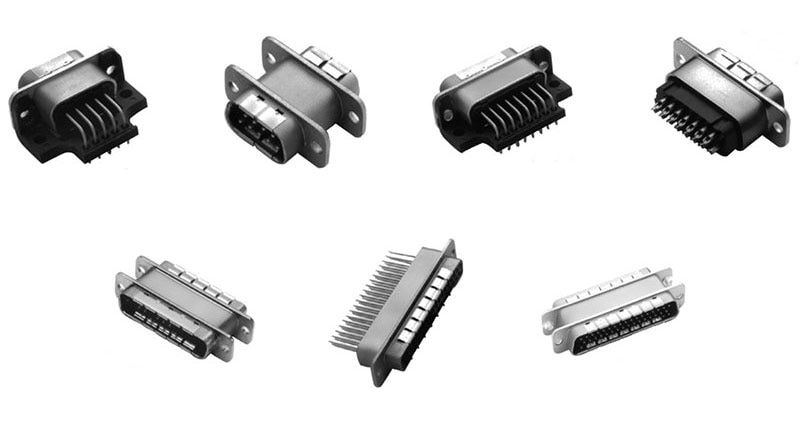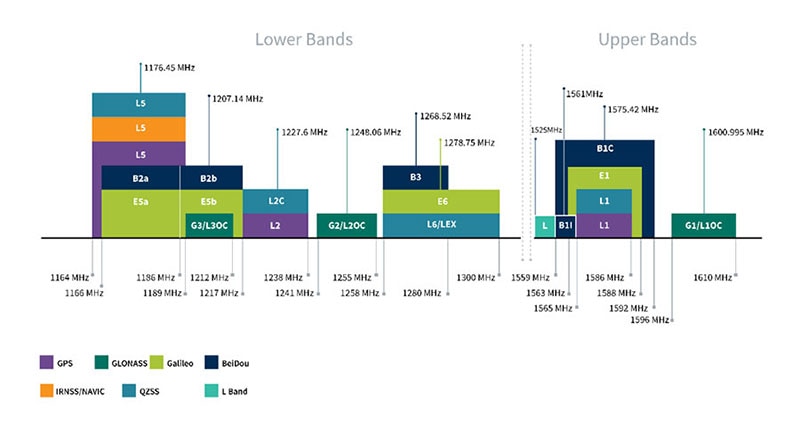Use Optimized IR Emitters to Minimize Performance Tradeoffs
The first visible-spectrum light-emitting diode (LED) was developed by Professor Nick Holonyak Jr. in 1962 and was commercialized within a few years. You could only get it in the color red, and the brightness was low and inconsistent from batch to batch. Still, it was the first step toward significant advances over incandescent and neon light sources, making solid-state lighting a mass-market reality.
Despite the initial shortcomings, these LEDs were soon used as indicator lamps and digital readouts, either in a matrix of LEDs or in a seven-segment display with bar-shaped lenses. Intensive research and development resulted in additional breakthroughs, including the development of yellow and green LEDs in the 1970s and, crucially, the creation of the high-brightness blue LED in the mid-1990s.
This creation paved the way for white light by combining the blue LED with red and green LEDs or by adding a phosphor coating. The rest of the broad LED story, including its dominance in backlighting, area illumination, and more, is well known.
Nonetheless, there’s a less-visible dimension to LED progress: the development of solid-state devices that emit mainly or exclusively in the infrared (IR) region of the spectrum. As such, their output is not visible. While this may seem of little use to the average consumer, these IR LEDs, more appropriately called IR emitters, are extremely valuable in scientific, industrial, sensing, authentication, biometric tracking, and even some consumer applications.
The unique attributes of IR emitters
As with red LEDs, the first IR emitters had limited and inconsistent performance. Nonetheless, they offered benefits over traditional IR sources, such as filtered incandescent filaments.
Today’s IR emitters deliver high performance across all major electrical and optical parameters. Further, they are tailored to optimize and emphasize specific performance attributes, enabling users to select the IR emitter that delivers superior performance in a target application.
These devices tend to have output wavelengths centered at 850, 920, and 940 nanometers (nm) (Figure 1). Note that 850 nm is close to the blurred border between the visible and IR regions of the spectrum, resulting in a slight red glow from the shorter-wavelength IR emitter.
 Figure 1 : IR emitters operate in the 780 to 1400 nm range; the widely used IR wavelength of 850 nm may also have some visible red glow, as it is close to the edge of the red spectrum of visible light. (Image: Gigahertz-Optik Inc.)
Figure 1 : IR emitters operate in the 780 to 1400 nm range; the widely used IR wavelength of 850 nm may also have some visible red glow, as it is close to the edge of the red spectrum of visible light. (Image: Gigahertz-Optik Inc.)
Leading-edge IR-emitter components
The OSLON P1616 and OSLON Black IR emitters from ams OSRAM are illustrative examples of the capabilities and technical advances of IR emitters. Both series use the ams OSRAM IR:6 chip technology for improved performance, including improvements in the internal chip reflector and chip mirror design that reduce optical losses in the die while increasing radiant intensity. According to ams OSRAM, the resulting IR emitters have 42% higher wall-plug efficiency and 35% higher output than those currently available.
The primary distinctions between the OSLON P1616 and the OSLON Black series are the former’s exceptionally small size and the latter’s variety of form factors and illumination patterns.
For example, P1616 devices, such as the SFH 4182BS-CB2DB1-11 (Figure 2, top), a high-power IR device that emits at 940 nm (Figure 2, bottom left), have a small footprint of 1.6 × 1.6 millimeters (mm) for densely packed designs. Their height may vary depending on the lens and style. Applications include biometric identification for access control, 2D facial-recognition authentication for laptops and smart doorbells, and IR illumination.
Members of the P1616 family offer a best-in-class nominal radiant intensity of 190 to 765 milliwatts/steradian (mW/sr) and a radiant flux ranging from 1000 mW to 1650 mW. The SFH 4182BS-CB2DB1-11 has a typical radiant intensity of 455 mW and radiant flux at the top end of 1650 mW. Both intensity and flux were measured at 1 ampere (A), but they can differ depending on the device suffix.
The SFH 4182BS-CB2DB1-11 also exhibits well-defined angular radiation characteristics under test conditions of 1 A forward current and a pulse width of 10 milliseconds (ms) (Figure 2, bottom right). The series’ use of Nanostack technology increases output by almost 180% and lensed versions are offered for ready design-in, while unlensed versions allow custom optical arrangements.
 Figure 2 : The lensed SFH 4182BS-CB2DB1-11 high-power IR emitter (top) from the P1616 series has a narrow emission band at 940 nm (bottom left); the device has well-defined angular radiation characteristics (bottom right) (1 A, 10 ms pulse). (Image source: ams OSRAM)
Figure 2 : The lensed SFH 4182BS-CB2DB1-11 high-power IR emitter (top) from the P1616 series has a narrow emission band at 940 nm (bottom left); the device has well-defined angular radiation characteristics (bottom right) (1 A, 10 ms pulse). (Image source: ams OSRAM)
The P1616 series offers three wavelength options: 850 nm for high camera sensitivity, 940 nm for reduced red glow for security and interior applications (semi-covert mode), and 920 nm for a balance of tradeoffs. The different available viewing angle options range from ±25° to ±60° and enable use across a wide range of applications, including those that require a rectangular view.
Devices from the OSLON Black series, such as the SFH 4716B (Figure 3, top), are cost-effective, high-performance IR emitters. The SFH 4716B has a peak wavelength of 850 nm (Figure 3, bottom left). The series also includes devices at 920 and 940 nm and combines exceptionally high total optical flux and small industry-standard packages with a footprint of 3.75 × 3.75 mm.
This emitter series offers flexibility in application designs due to its wide variety of packages and chip options, as well as available stacked and non-stacked chip iterations for different brightness levels. Leading applications include 2D face recognition, long- and short-range CCTV cameras, home security, machine vision, and number plate recognition.
The devices’ performance includes radiant intensity spanning 200 to 280 mW/sr (at 1 A), radiant flux of 1050 or 2000 mW (at 1 A/2 A), and low thermal resistance for operation at elevated temperatures, which may be due to ambient temperature and high-current DC operation. The radiation pattern of the SFH 4716B (Figure 3, bottom right) differs slightly from that of the SFH 4182BS-CB2DB1-11 under similar test conditions. However, like the rest of the Black series, it maintains the same wide viewing angle range of ±25° to ±60°.
 Figure 3 : The SFH 4716B (top) from the OSLON Black series of IR emitters has a peak output at 850 nm (bottom left) and a slightly different radiation pattern (bottom right) compared to the SFH 4182BS-CB2DB1-11. (Image source: ams OSRAM)
Figure 3 : The SFH 4716B (top) from the OSLON Black series of IR emitters has a peak output at 850 nm (bottom left) and a slightly different radiation pattern (bottom right) compared to the SFH 4182BS-CB2DB1-11. (Image source: ams OSRAM)
Conclusion
It’s fascinating to see how IR emitters have advanced from relatively crude and erratic components to widely available, high-performance, consistent IR sources. The latest versions, such as those in the ams OSRAM OSLON P1616 and OSLON Black series, offer designers a combination of high performance and a breadth of choices in wavelength, size, intensity, and other key parameters. These IR emitters enable diverse applications ranging from biometric security to area imaging and machine vision.
Related Content
1: Light is security: Selection guide and product portfolio for infrared vision applications (brochure)
https://look.ams-osram.com/m/39974ab4771efcd2/original/aO-IRED-Brochure-112023.pdf
2: SFH 4182BS OSLON P1616 Data Sheet
https://look.ams-osram.com/m/154b521f0188e2f1/original/SFH-4182BS.pdf
3: SFH 4716B OSLON Black Data Sheet
https://look.ams-osram.com/m/19ecb8089d239a55/original/SFH-4716B.pdf

Have questions or comments? Continue the conversation on TechForum, Digi-Key's online community and technical resource.
Visit TechForum









